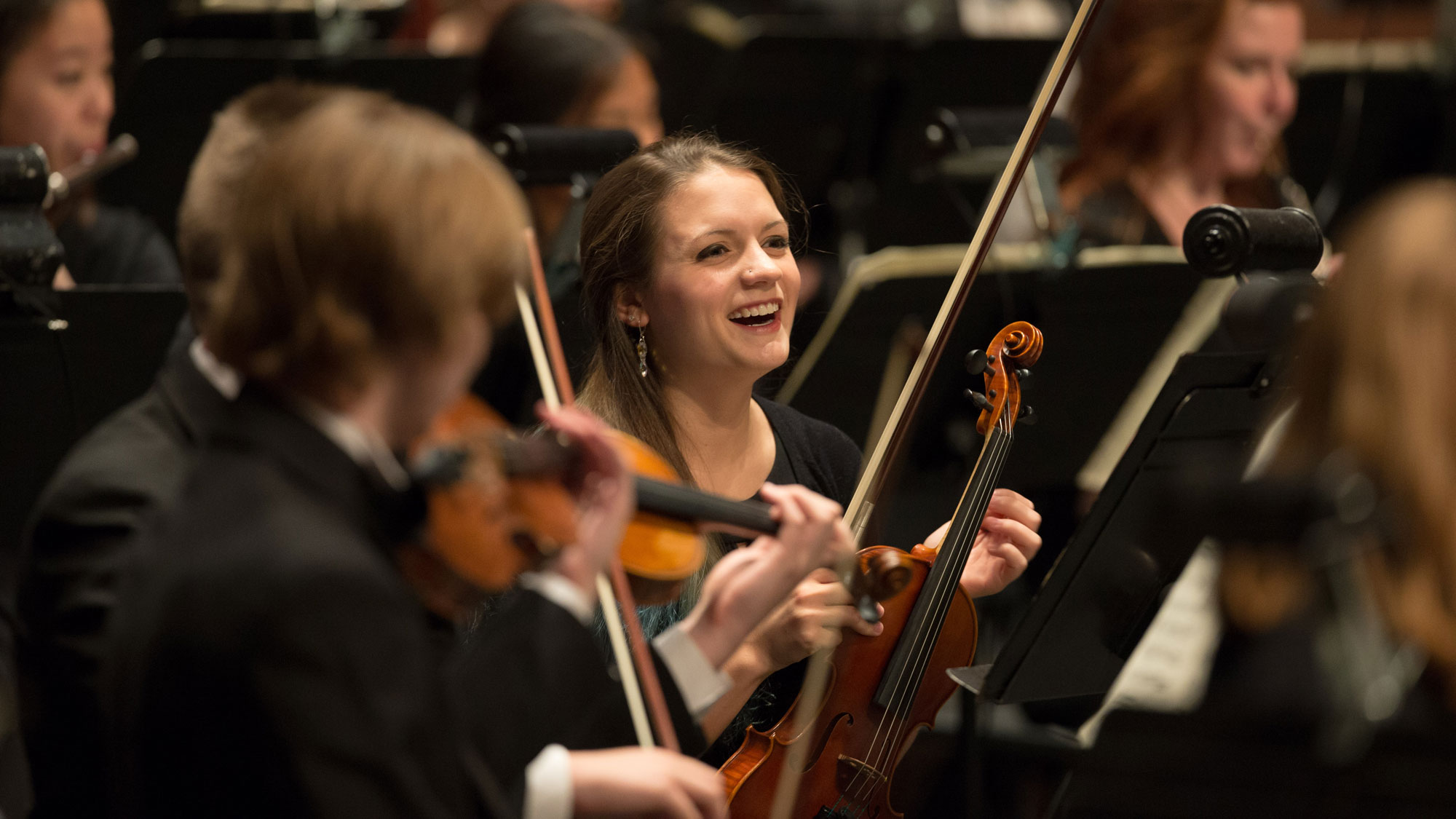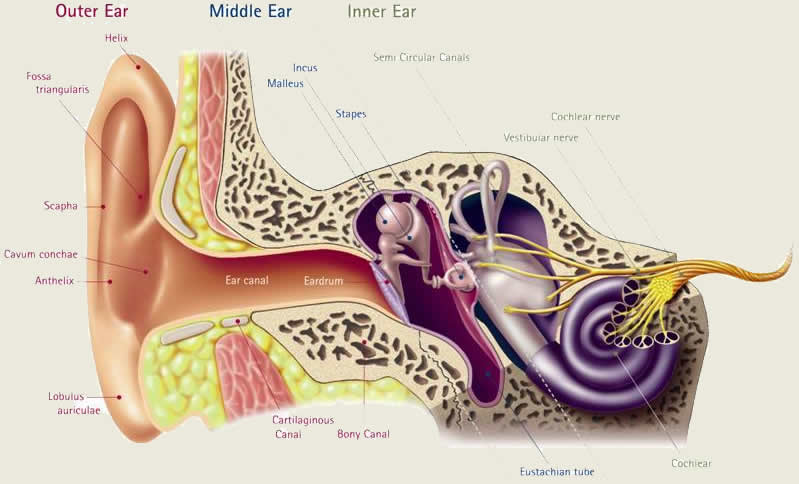The Furman University Department of Music, as required by the National Association of Schools of Music (NASM), is obligated to inform students, faculty and staff of the health and safety issues, hazards, and procedures inherent in music practice, performance, teaching, and listening both in general and as applicable to their specific specializations. This includes, but is not limited to, basic information regarding the maintenance of hearing, vocal, and musculoskeletal health and injury prevention.
It is important to note that the primary factor in your health and safety is you and depends largely on your personal decisions. You are personally responsible for avoiding risk and preventing injuries to yourself before, during, and after study at the Furman University Department of Music. Many organizations now exist that are dedicated to helping musicians maintain and protect health. NASM has collaborated with the Performing Arts Medical Association (PAMA) to develop a number of useful documents concerning health for musicians. The information below is based on documents developed together by NASM and PAMA. In addition, you will find links to a number of websites that are devoted to these issues.
Neuromusculoskeletal health is essential to your lifelong success as a musician. The human neuromusculoskeletal system is comprised of the nervous system, the muscular system, and the skeletal system. Together, these systems support the body’s physical structure and enable movement. In these resource documents, the term “neuromusculoskeletal” is used to encompass not only overt physical movements (the pressing of a key, the strumming of a string), but also the small internal movements our bodies make, for example to produce breath and modify vocal sounds. Vocal health is referred to as a component of neuromusculoskeletal health within these documents. When the term “neuromusculoskeletal” is used, vocal health is included. “Neuromusculoskeletal” also includes the body’s position in space and the relationship of the skeletal system to corresponding muscles and tissues. Terms such as “alignment” or “posture,” which often refer to spinal positioning, weight distribution, muscular support, and balance, are important talking points in conversations about musicians’ neuromusculoskeletal health. Good health and healthy behaviors are important to all musicians, regardless of instrument and area of specialization.
You are responsible for your behavior in and outside of the music department. Your day-to-day decisions have a great impact on your neuromusculoskeletal and vocal health, both now and years from now. Do yourself a favor. Be smart. Protect your body and your voice. Don’t take unnecessary risks. Take care of yourself. You owe it to yourself.
Adapted from: The National Association of Schools of Music (NASM) and Performing Arts Medicine Association (PAMA) Protecting Your Hearing Health – Student Information on Noise-Induced Hearing Loss
Hearing health is essential to your lifelong success as a musician. Your hearing can be permanently damaged by loud sounds, including music. Technically, this is called Noise-Induced Hearing Loss (NIHL). Such danger is constant. Noise-induced hearing loss is generally preventable. You must avoid overexposure to loud sounds, especially for long periods of time. The closer you are to the source of a sound, the greater the risk of damage to your hearing. Sounds over 85dB (your typical vacuum cleaner) in intensity pose the greatest risk to your hearing. Risk of hearing loss is based on a combination of sound loudness and duration.
Earplugs for musicians: earplugstore.com/nasopl.html
Recommended maximum daily exposure times (National Institute for Occupational Safety and Health – NIOSH) to sounds at or above 85 dB are as follows:
- 85 dB (vacuum cleaner, mp3 player at 1/3 volume) – 8 hours
- 90 dB (blender, hair dryer) – 2 hours
- 94 dB (mp3 player at 1/2 volume) – 1 hour
- 100 dB (mp3 player at full volume, lawnmower) – 15 minutes
- 110 dB (rock concert, power tools) – 2 minutes
- 120 dB (jet planes at takeoff) – without ear protection, damage is almost immediate
Certain behaviors (controlling volume levels in practice and rehearsal, avoiding noisy environments, turning down the volume on your earbuds!) reduce your risk of hearing loss. When performing in either electric or acoustic ensembles, practice at safe volumes. Additionally, the use of earplugs can help to protect your hearing. Consider purchasing high-quality hearing protection such as custom molded earplugs.
Day-to-day decisions can impact your hearing health, both now and in the future. Since sound exposure occurs in and out of school, you also need to learn more and take care of your hearing health on a daily, even hourly basis.
When using headphones in labs or while recording, keep your monitoring levels low. This will protect your hearing and maintain your essential ability to notice detail. If your neighbor can hear the music from your headphones, you are monitoring with too much volume.
If you are concerned about your personal hearing health, talk with a medical professional. If you are concerned about your hearing health in relationship to your program of study, consult the appropriate contact person at your institution.
Additional web links related to hearing health:
 Practicing and performing music is physically demanding. Musicians are susceptible to numerous neuromusculoskeletal disorders. Some musculoskeletal disorders are related to behavior; others are genetic; still, others are the result of trauma or injury. Some genetic conditions can increase a person’s risk of developing certain behavior- related neuromusculoskeletal disorders.
Practicing and performing music is physically demanding. Musicians are susceptible to numerous neuromusculoskeletal disorders. Some musculoskeletal disorders are related to behavior; others are genetic; still, others are the result of trauma or injury. Some genetic conditions can increase a person’s risk of developing certain behavior- related neuromusculoskeletal disorders.
Many neuromusculoskeletal disorders and conditions are preventable and/or treatable.
- Sufficient physical and musical warm-up time is important.
- Proper body alignment and correct physical technique are essential.
- Regular breaks during practice and rehearsal are vital in order to prevent undue physical stress and strain.
- It is important to set a reasonable limit on the amount of time that you will practice in a day.
- Avoid sudden increases in practice times.
- Know your body and its limits, and avoid “overdoing it.”
Maintain healthy habits. Safeguard your physical and mental health.
Day-to-day decisions can impact your neuromusculoskeletal health, both now and in the future. Since muscle and joint strains and a myriad of other injuries can occur in and out of school, you also need to learn more and take care of your own neuromusculoskeletal health on a daily basis, particularly with regard to your performing medium and area of specialization.
If you are concerned about your personal neuromusculoskeletal health, talk with a medical professional. If you are concerned about your neuromusculoskeletal health in relationship to your program of study, consult the appropriate contact person at your institution.
Vocal health is important for all musicians and is essential to lifelong success for singers. Understanding basic care of the voice is essential for musicians who speak, sing, and rehearse or teach others. Because practicing, rehearsing, and performing music are physically demanding activities, musicians are susceptible to numerous vocal disorders, many of which are preventable and/or treatable. Some points to consider:
- Sufficient warm-up time is important.
- Begin warming up mid-range, and then slowly work outward to vocal pitch extremes.
- Good posture, adequate breath support, and correct physical technique are essential.
- Regular breaks during practice and rehearsal are vital in order to prevent undue physical or vocal stress and strain.
- It is important to set a reasonable limit on the amount of time that you will practice in a day.
- Avoid sudden increases in practice times.
- Know your voice and its limits, and avoid overdoing it or misusing it.
- Maintain healthy habits. Safeguard your physical and mental health.
- Drink plenty of water in order to keep your vocal folds adequately lubricated. Limit your use of alcohol, and avoid smoking.
- Avoid shouting, screaming, or other strenuous vocal use.
Day-to-day decisions can impact your vocal health, both now and in the future. Since vocal strain and a myriad of other injuries can occur in and out of school, you also need to learn more and take care of your own vocal health on a daily basis.
If you are concerned about your personal vocal health, talk with a medical professional or your voice teacher. If you are concerned about your vocal health in relationship to your program of study, consult the appropriate contact person at your institution.
Resources- Information and Research
- National Association of Schools of Music (NASM)
- Protect Your Neuromusculoskeletal and Vocal Health Every Day.pdf
- Protecting your Neuromusculoskeletal Health.pdf
- Protecting Your Vocal Health.pdf
- Performing Arts Medicine Association (PAMA)
- PAMA Bibliography (search tool)
Medical Organizations Focused on Neuromusculosketal and Vocal Health
- American Academy of Neurology
- American Academy of Orthopedic Surgeons
- American Academy of Otolaryngology – Head and Neck Surgery
- American Academy of Physical Medicine and Rehabilitation
- American Association for Hand Surgery
- American Society for Surgery of the Hand
- American Laryngological Association
- The American Occupational Therapy Association, Inc.
- American Psychiatric Association
- American Psychological Association
- American Physical Therapy Association
- American Speech-Language-Hearing Association
- National Center for Complementary and Integrative Health

